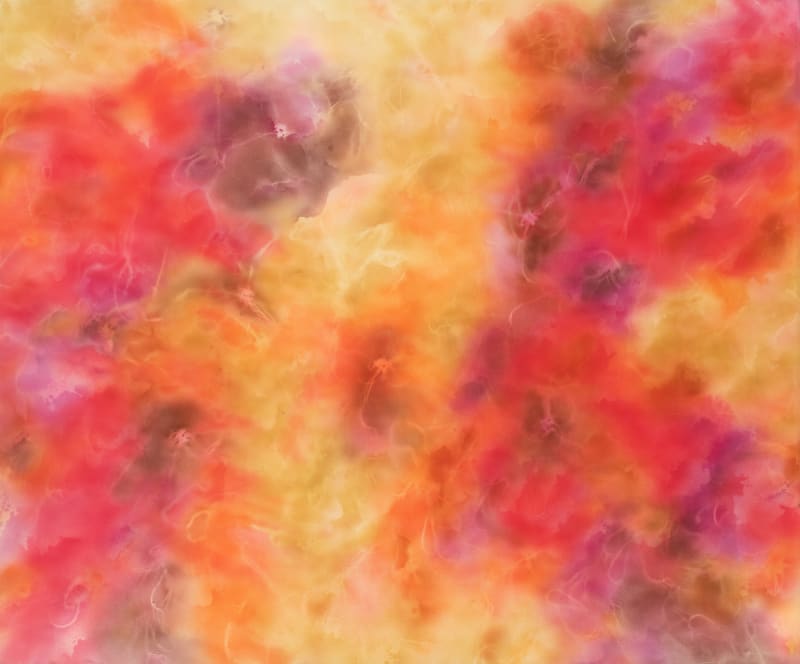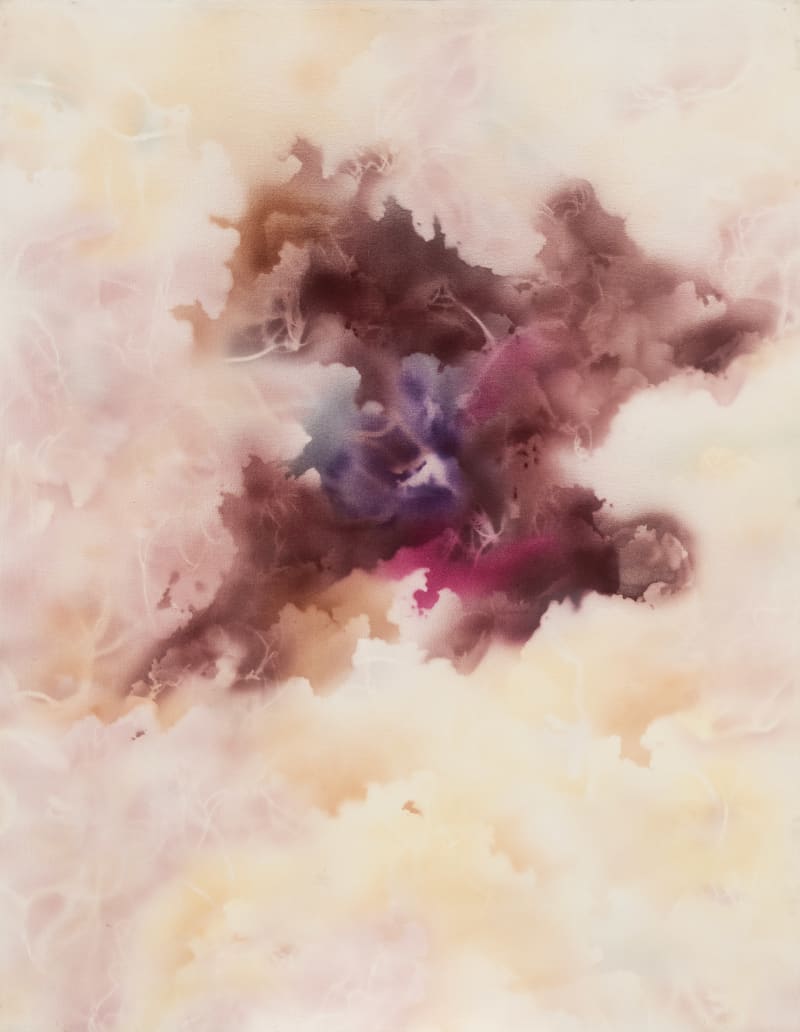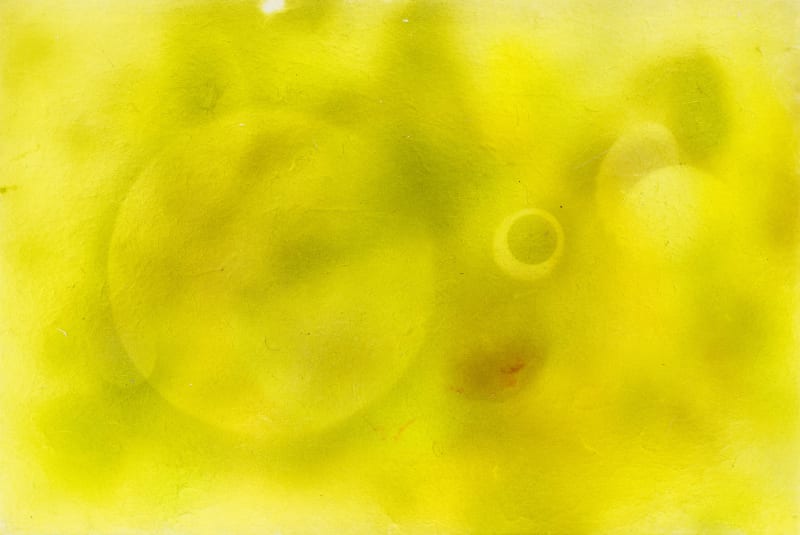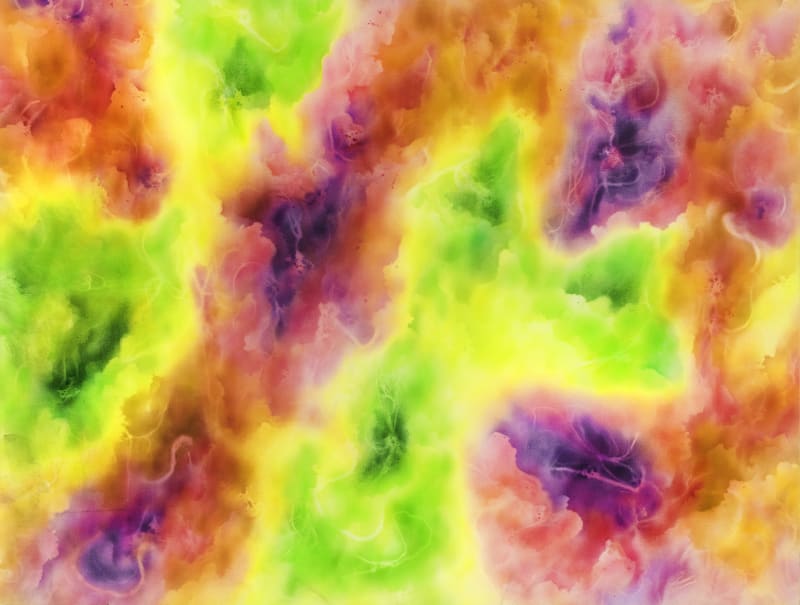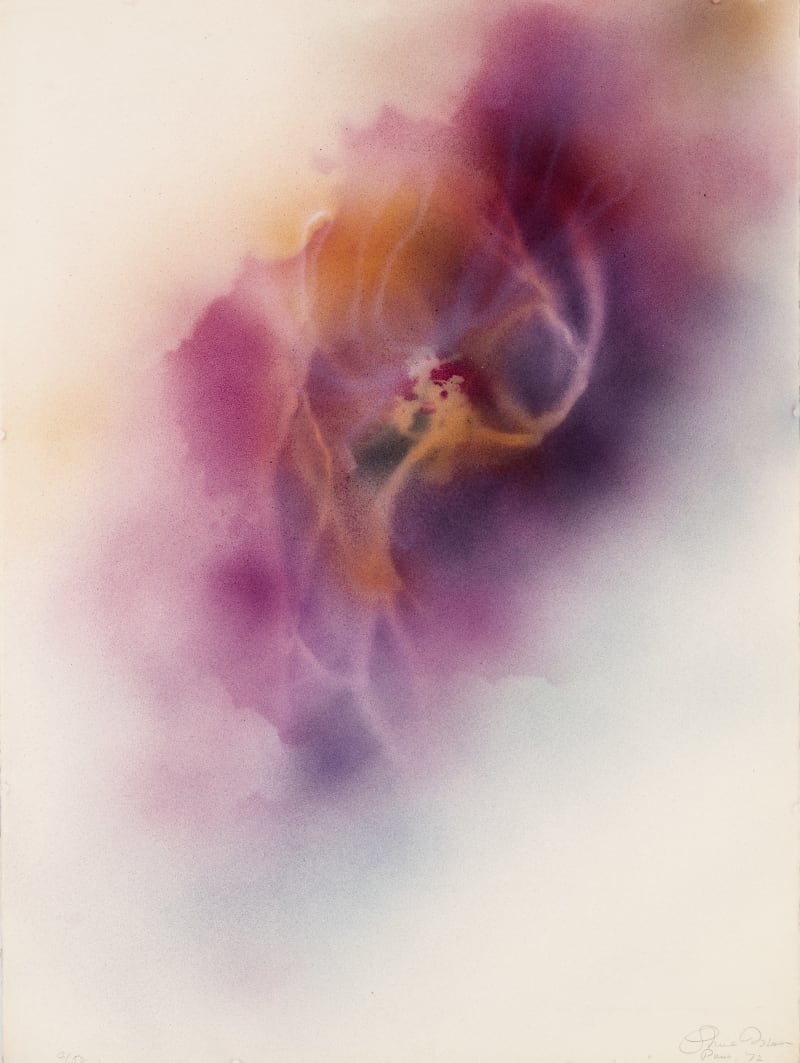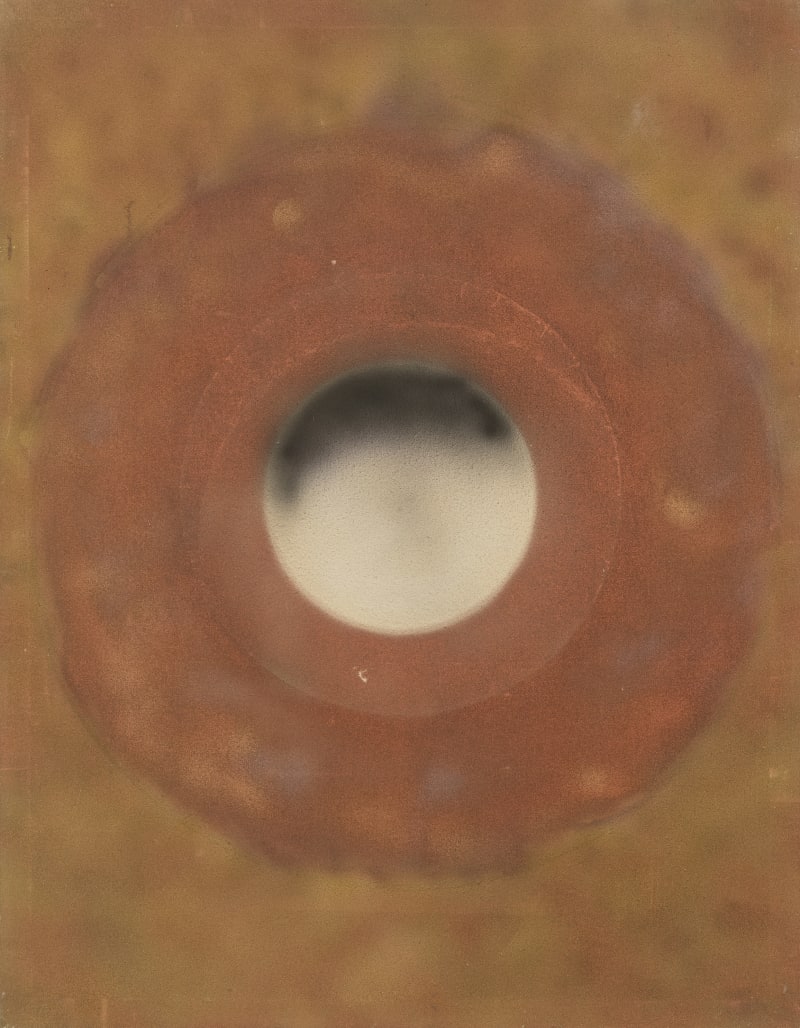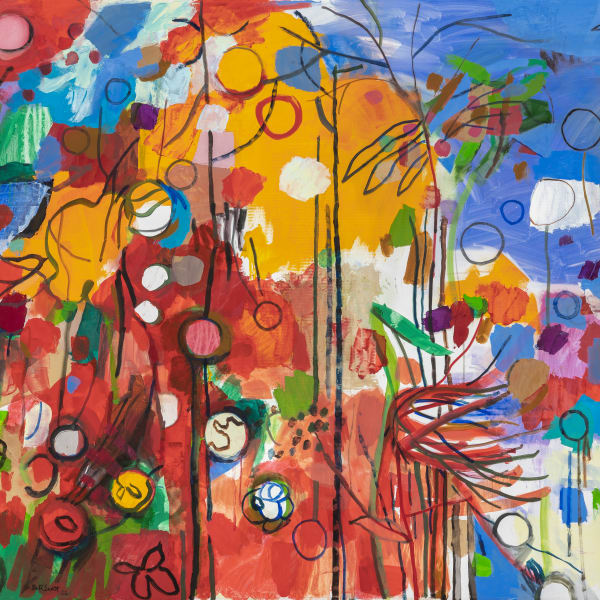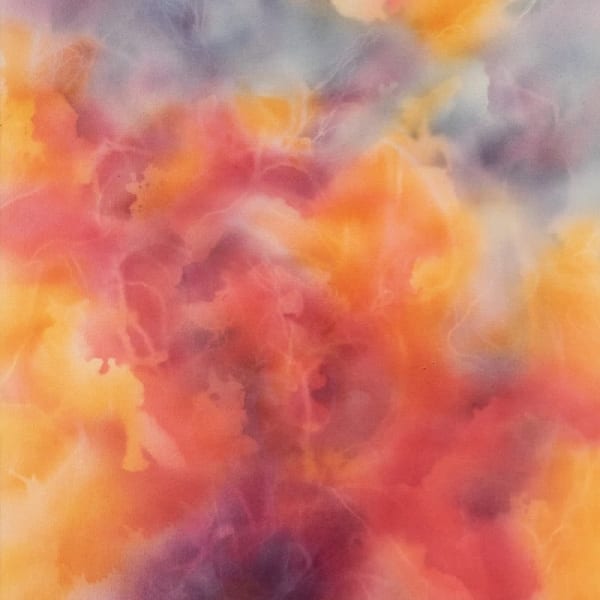
Isham’s work is ultimately not about describing or symbolizing but about generating life force.
Few artists of the 20th century can boast a life of sojourns as rich and artistically textured as that of Sheila Eaton Isham. Born in New York City in 1927, the American abstract painter lived and traveled with her diplomat husband in Germany, Russia, Hong Kong, Washington, D.C., Paris, Haiti, and New York, absorbing the various influences and traditions of each place into her work. Throughout a dedicated career spanning over five decades, Isham used painting, lithography, book arts, and collage to explore her enduring interest in philosophy and nature, which she cited as her greatest teacher. As Edward Solanski, a critic for The Philadelphia Inquirer, once astutely noted, “Isham’s work is ultimately not about describing or symbolizing but about generating life force.”
Few artists of the 20th century can boast a life of sojourns as rich and artistically textured as that of Sheila Eaton Isham. Born in New York City in 1927, the American abstract painter lived and traveled with her diplomat husband in Germany, Russia, Hong Kong, Washington, D.C., Paris, Haiti, and New York, absorbing the various influences and traditions of each place into her work. Throughout a dedicated career spanning over five decades, Isham used painting, lithography, book arts, and collage to explore her enduring interest in philosophy and nature, which she cited as her greatest teacher. As Edward Solanski, a critic for The Philadelphia Inquirer, once astutely noted, “Isham’s work is ultimately not about describing or symbolizing but about generating life force.”
After graduating from Bryn Mawr College, Isham moved to Berlin with her husband who had been appointed to the American Missions. She became the first American citizen to be accepted at the Berlin Academy of Fine Arts, where she studied from 1950 to 1954 under German Abstract Expressionists. In 1955, Isham accompanied her husband to Moscow, where she immersed herself in Russian modernist avant-garde art and created lyrical lithographs of the surrounding urban landscape. Her next move to Hong Kong in 1962 proved catalytic for the artist, who began rigorous study of classical Chinese calligraphy for three years and assimilated the abstract possibilities of Chinese hieroglyphs into her visual vocabulary. Returning to Washington, D.C. in 1965, Isham adapted the airbrush technique to create color abstractions that evoke dreamscapes of mottled, cloud-like forms. These she combined with chance procedures and specific titling sourced from the I Ching, reinvigorating Eastern artistic traditions and merging them with her atmospheric fields of acrylic coloration. Her intuitive relationship to color and light is particularly pronounced in these meditative, stunning paintings. “Color and light for a painter are the two most important elements,” Isham remarked. “Light is so extraordinary because light is behind and in front, within. For example, you can look at a person and tell how much light they have within them. And it’s the same way in nature. You wake up in the morning and the sun is coming up in one end and it feels differently from the evening.” In the late 1970s, she began to experiment with iconography culled from Haitian animism, Eastern cosmography, and Hinduism. Isham’s later works at the end of the 20th century feature more saturated color palettes and combine collaged biomorphic figuration with energetic brush strokes. No matter how her style evolved, her works consistently and assiduously evoke a mystical quality and bring to the fore her profound interest in spirituality. Throughout her fascinating career, Isham imbued her works with her tirelessly inquisitive spirit and an intuitive, expressive sense of color.
Isham has had solo exhibitions at the Smithsonian Institute in Washington, D.C. (1961); Albright Knox Art Gallery, Buffalo (1974, 1981); Georgia Museum of Art, Atlanta (1993); Russian Museum, Marble Palace, St. Petersburg, Russia; Russian State Museum, St. Petersburg, Russia (2004), among others. Her work is held in major public and private collections, including the Museum of Modern Art, New York; Baltimore Museum of Art; Hirshhorn Museum, Washington, D.C.; Library of Congress, Washington, D.C.; Minneapolis Institute of Art; National Gallery of Art, Washington, D.C.; New Orleans Museum of Art; Philadelphia Museum of Art; Parrish Art Museum, Water Mill, New York; Princeton University Art Museum; Smithsonian American Art Museum, Washington, D.C.; Walker Art Center, Minneapolis; and Yale University Art Gallery.
Works

